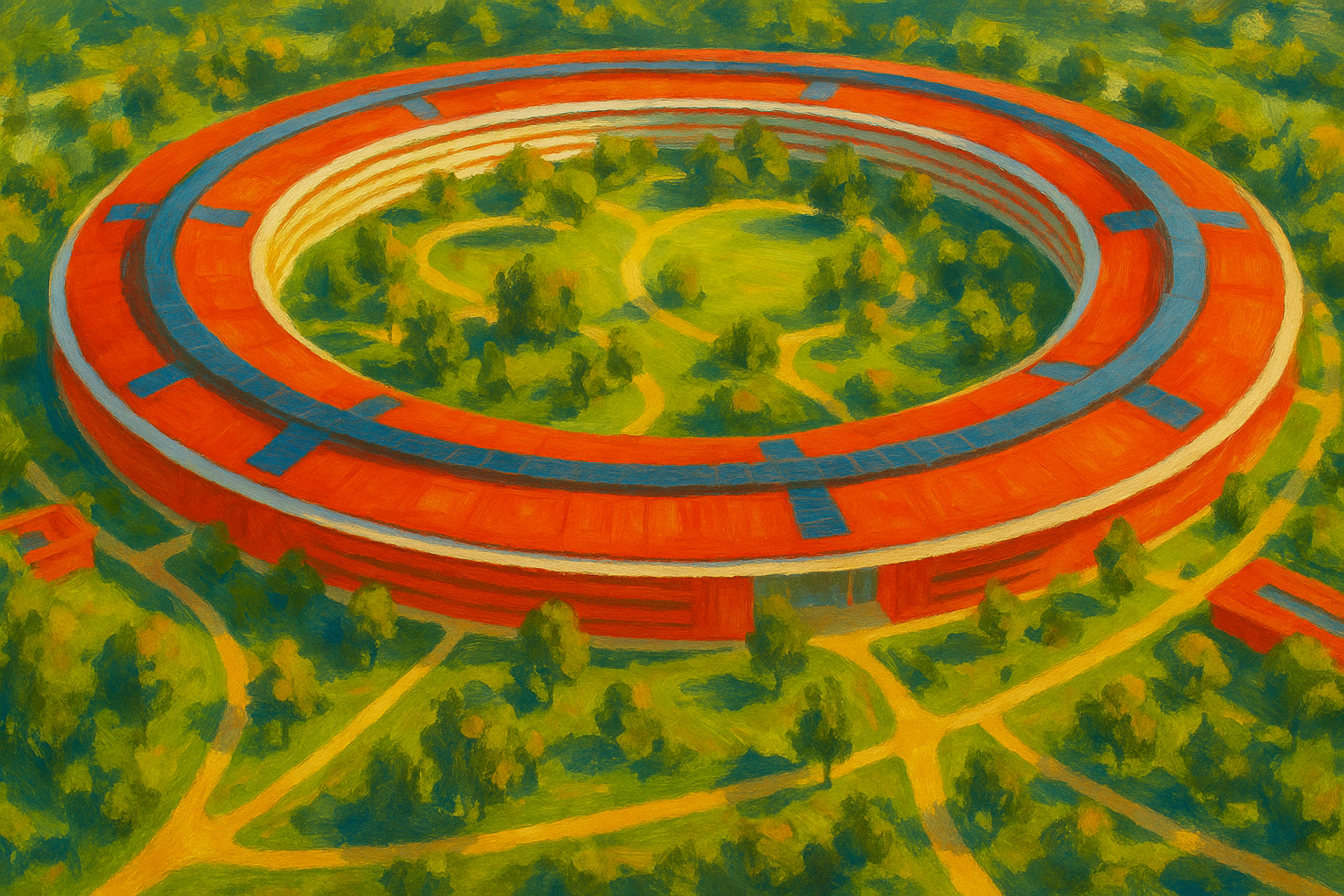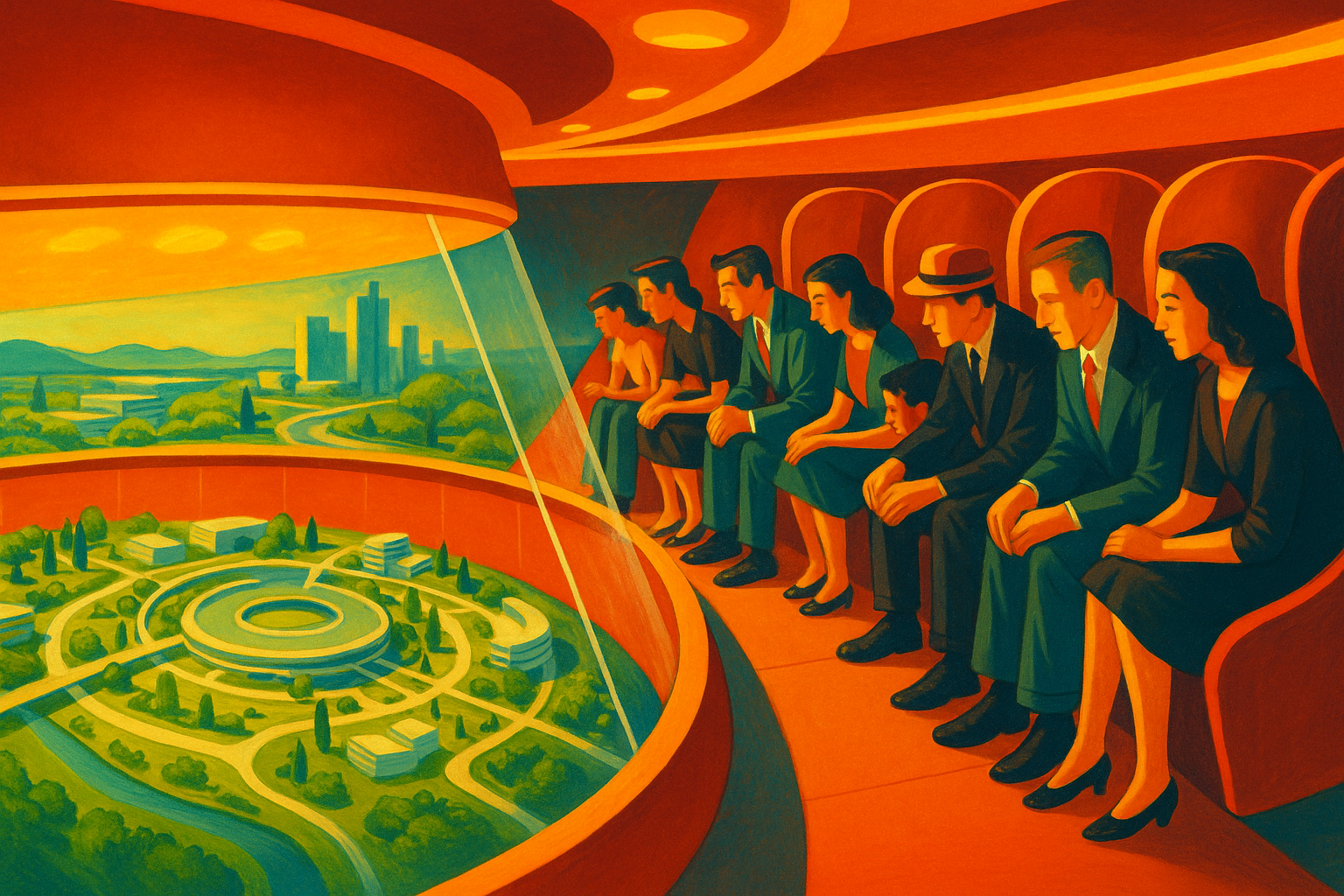The Element of Integration

The Craft Domain
What if a sustainable future was both more delightful to live in and more rewarding to work in? What would have to be true for circular transformation to create abundance on both sides—better experiences for customers and better returns for the companies serving them?
The answer lies in understanding that brand, strategy, and organizational architecture are not three separate departments. They are the same thing. And mastering this holistic integration—what we call the Craft domain—is what takes circular transformation from sustainability obligation into systematic competitive advantage.
My Favorite Brush with Greatness
Many years ago, I had lunch with two legendary ad men: David Bell, my friend and mentor, and Lee Clow, the ingenious creative behind Apple's "1984" Super Bowl commercial and "Think Different" campaign.
That conversation fundamentally changed how I understood the future of business.

"Everything a company does is media," Lee said, leaning forward with memorable intensity. “…and a brand is the sum of a company’s media. That means a company's brand is the sum of everything the company does. It's ads, and packaging, and store design, and customer support, and product design. Everything."
How did his illustrious client manage that comprehensive integration?
“Steve Jobs looks at everything. Apple is like a web. And in the center lives a spider”—Jobs—“with perfect taste and unlimited capacity."
It was a striking message. At the time, I thought it was an idea about BRAND. But looking back, I realize now it was more than that.
From Brand to Strategy to Organization
The taco lunch was the first lesson.
The next one came from Roger Martin, in the form of his essay It’s Time to Accept that Marketing and Strategy are One Discipline. His premise: strategy and marketing converged during the late 20th century and now represent a single capability focused on Where to Play/How to Win. The distinction between the two? Strategy looks up the value chain at suppliers, and marketing looks down it, at customers. A unified, integrated approach aligns all parties.
This convergence explains why Clow's formulation proved prescient. Apple wasn't just creating integrated marketing; they were creating integrated STRATEGY where every touchpoint reinforced their competitive positioning.
Unified strategy like that requires the organizational capability to deliver it. In their essay “How Apple Is Organized for Innovation” for The Harvard Business Review, Joel Polodny and and Morten Hansen describe the ORGANIZATIONAL ARCHITECTURE that makes it possible, long after the departure of Steve Jobs—a functional structure that operates under a single P&L. The benefit is obvious for cross-disciplinary cooperation.1
That was the final lesson.

The Same Thing
To borrow a phrase from Steve Jobs’ iconic iPhone unveil: brand, strategy, and organizational architecture are not three things. They are the same thing. Brand coherence, strategic integration, and organizational alignment represent a unified capability and How-to-Win. This is the domain we call Craft.
We call this domain Craft because it transforms systematic thinking into artful execution—the integration layer that makes everything beautifully coherent. It confers on leaders the mastery to synthesize complexity into elegant action.
Consider how our domains build toward this integration:
- Horizons unlocks future focus and makes radical innovation (like circular solutions) possible.
- Living Futures creates shared vision of that radical innovation.
- Catalysts provides capabilities and systems that enable it.
- Connection builds consensus for it through positive emotional energy.
Craft is where the work gets done—the systematic culmination into beautiful reality.
Why Circular Solutions Require Integration
The integration challenge becomes acute when companies attempt circular business models within linear organizational structures. Three examples reveal why:
Product-as-a-Service requires managing multiple attachments simultaneously. Customer relationships, supplier networks, and the product assets themselves must be coordinated in real-time. Linear structures, where each function optimizes independently (under its own P&L), treat these interdependencies as second-class citizens.
Circular design demands continuous cross-functional dialogue. The dialectic between manufacturing and repair/reuse adds an exponent of complexity for the rest of the organization. Touchpoints graduate from concatenated snapshots to vivid moving pictures that last as long as the asset or the customer relationship—the longer, the better.
Resource recovery adds a “reverse gear" to every organizational function. Sales teams must understand take-back programs, manufacturing must accommodate remanufacturing, finance must model asset recovery, marketing must communicate second-life benefits.
In each case, every node connects to every other node. Like a web.
Nothing gets tossed over the transom and forgotten—every function loops back. The circularity-enabled organization requires wholesale evolution to a level of capability and awareness beyond today’s best.
The Circular Organization Imperative
To deliver new-to-world circular solutions, the organizations that make them must be just as circular. There can be no waste, no externalities, no duplicative work, no rework—no heat without light.
This organizational circularity explains why Steve Jobs designed Apple Park as a circle. The building embodies perfect flow, no waste, elegant execution where every element reinforces every other element.
Functional organization enables this circularity by aligning expertise with decision rights rather than negotiating territorial conflicts. When experts work across all products rather than being scattered across divisions, innovations benefit entire ecosystems.
So What? Strategic Implications
For Business Leaders
The Craft domain positions circular transformation as organizational capability development rather than sustainability compliance. Your competitive advantage lies not in having circular products, but in building integration capabilities that enable circular innovation at scale.
Immediate Action: Audit your organizational structure through the circular lens. Are functions optimized for independence or interdependence? Product-as-a-service companies need manufacturing teams who understand lifetime value, marketing teams who communicate service benefits, and finance teams who capture value from asset longevity and utilization.
Strategic Positioning: Frame circular transformation as operational excellence opportunity. Companies that master Craft domain integration create systematic advantages: faster innovation cycles, reduced coordination costs, and unified customer experiences that linear competitors cannot match.
Investment Strategy: Prioritize functional organization capabilities over business unit optimization. The integration requirements of circular business models justify organizational architecture changes that initially seem disruptive but create lasting competitive advantages.
For Innovation Leaders
Circular innovation requires different organizational capabilities than linear product development. Innovation strategy must shift from sequential development processes to integrated collaboration across all functions simultaneously.
Experience Design: Apply Apple's collaborative debate model to circular innovation. Design decisions must involve manufacturing (for repairability), marketing (for positioning), finance (for business model impact), and customer success (for service delivery) from project inception.
Integration Capabilities: Develop expertise in managing organizational interdependencies rather than optimizing individual functions. Circular innovation succeeds when every function understands its connections to every other function.
Cultural Development: Build cultures where "good mess" (productive cross-functional tension) creates breakthrough solutions while "bad mess" (territorial conflicts) gets eliminated through shared purpose and aligned incentives.
For Governance Leaders
The Craft domain represents organizational transformation that enables circular business model innovation. Companies that build these integration capabilities will create sustainable competitive advantages that justify premium valuations.
Transformation Investment: View functional organization development as essential infrastructure for circular business models. Like digital transformation required new technical capabilities, circular transformation requires new organizational capabilities.
Competitive Assessment: Organizations attempting circular transformation without functional integration capabilities will struggle with coordination failures, duplicative work, and misaligned incentives that undermine profitability.
Value Creation: Integration capabilities create compound advantages over time. Companies that master Craft domain principles don't just serve markets—they shape culture through coherent brand experiences that communicate values through every touchpoint.
The Practitioner Insights section explores advanced implementation methodologies for organizational integration, including specific design choices for functional architecture, cross-functional collaboration systems, and cultural development techniques that enable sustained circular transformation.

Subscribe to continue reading






